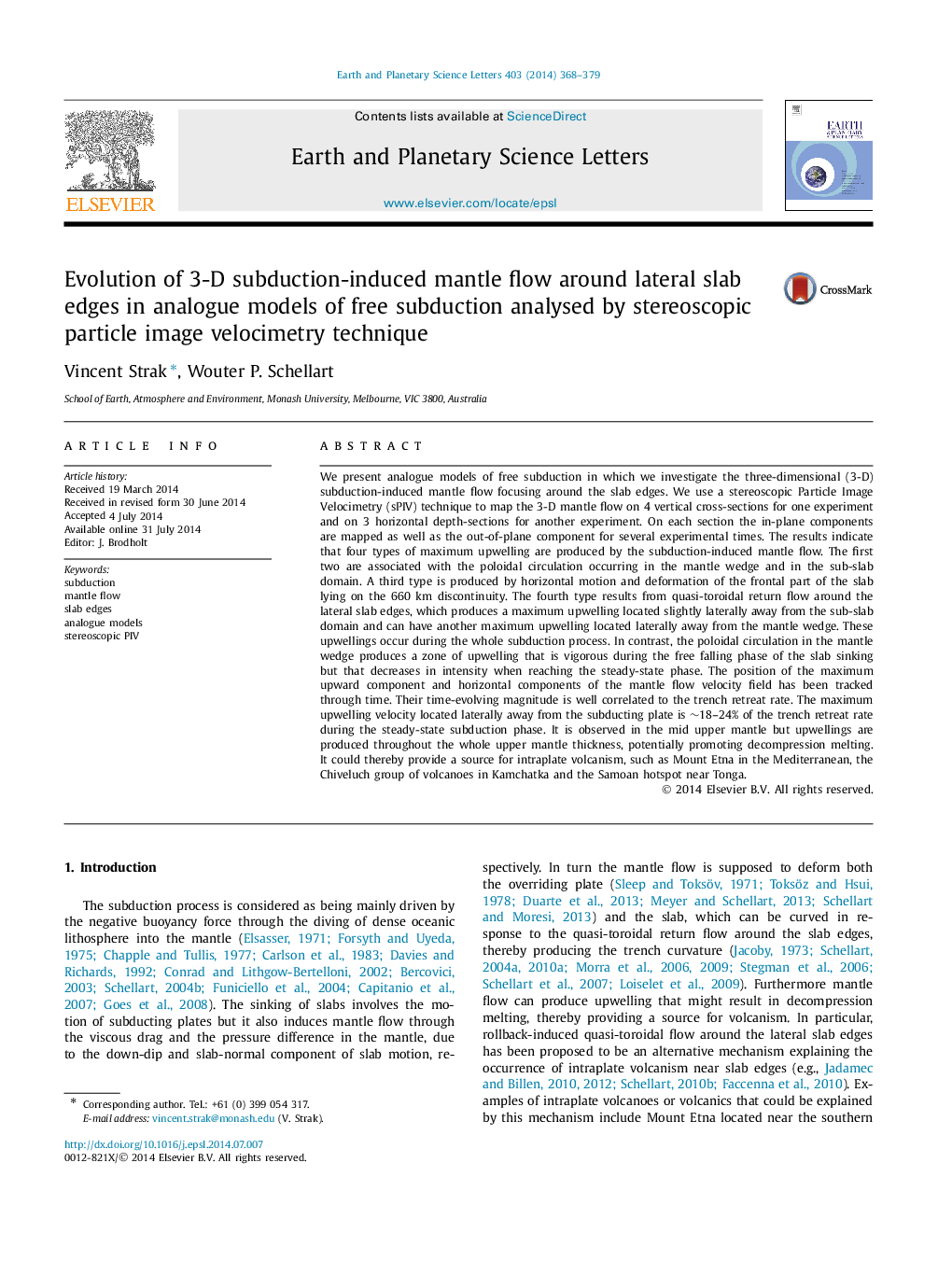| کد مقاله | کد نشریه | سال انتشار | مقاله انگلیسی | نسخه تمام متن |
|---|---|---|---|---|
| 6429148 | 1634753 | 2014 | 12 صفحه PDF | دانلود رایگان |

- Analogue models of free subduction and resulting mantle flow are performed.
- Stereoscopic Particle Image Velocimetry technique is used to map the 3-D mantle flow.
- One type of mantle upwelling occurs outboard due to return flow around each slab edge.
- Three other types of mantle upwelling occur throughout the subduction zone.
- Upwelling near slab edges is present from subduction initiation until late stage.
We present analogue models of free subduction in which we investigate the three-dimensional (3-D) subduction-induced mantle flow focusing around the slab edges. We use a stereoscopic Particle Image Velocimetry (sPIV) technique to map the 3-D mantle flow on 4 vertical cross-sections for one experiment and on 3 horizontal depth-sections for another experiment. On each section the in-plane components are mapped as well as the out-of-plane component for several experimental times. The results indicate that four types of maximum upwelling are produced by the subduction-induced mantle flow. The first two are associated with the poloidal circulation occurring in the mantle wedge and in the sub-slab domain. A third type is produced by horizontal motion and deformation of the frontal part of the slab lying on the 660 km discontinuity. The fourth type results from quasi-toroidal return flow around the lateral slab edges, which produces a maximum upwelling located slightly laterally away from the sub-slab domain and can have another maximum upwelling located laterally away from the mantle wedge. These upwellings occur during the whole subduction process. In contrast, the poloidal circulation in the mantle wedge produces a zone of upwelling that is vigorous during the free falling phase of the slab sinking but that decreases in intensity when reaching the steady-state phase. The position of the maximum upward component and horizontal components of the mantle flow velocity field has been tracked through time. Their time-evolving magnitude is well correlated to the trench retreat rate. The maximum upwelling velocity located laterally away from the subducting plate is â¼18-24% of the trench retreat rate during the steady-state subduction phase. It is observed in the mid upper mantle but upwellings are produced throughout the whole upper mantle thickness, potentially promoting decompression melting. It could thereby provide a source for intraplate volcanism, such as Mount Etna in the Mediterranean, the Chiveluch group of volcanoes in Kamchatka and the Samoan hotspot near Tonga.
Journal: Earth and Planetary Science Letters - Volume 403, 1 October 2014, Pages 368-379